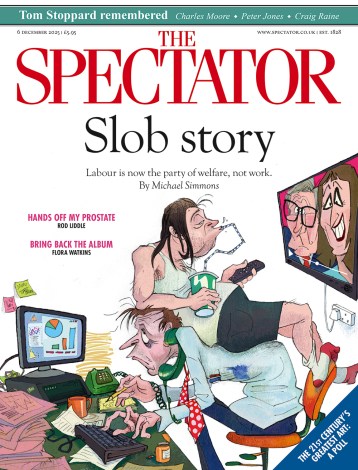There was a time when ‘classical music’ meant something you could put your finger on. It denoted the musical period between roughly 1750 and 1800, when Haydn, Mozart and many others wrote symphonies, concertos and instrumental pieces with a sense of form and grace that were likened to the art and architecture of Classical Greece and Rome. And it sat happily between two other important musical periods, the Baroque and the Romantic. Everybody knew where they stood.
Not any more. Nowadays, for some people, ‘classical music’ probably means the same as ‘highbrow music’ — something that’s not for them. Otherwise it has become a catch-all phrase or term that nearly everyone else uses without ever trying to define it. So what might it mean today? ‘Classical’ or ‘classic’ usually refers to something that has endured, stood the test of time. In that case, what about Albert Ketelbey’s ‘In a Monastery Garden’, Eric Coates’s ‘Sleepy Lagoon’ (of Desert Island Discs fame), ‘The Lambeth Walk’, ‘Roll Out the Barrel’, the Beatles’ ‘A Hard Day’s Night’? Are they pieces of ‘classical music’? Not for most of us.
Perhaps they’re not old enough. Well, medieval plainsong has been around for more than 1,000 years. But do people speak of that as ‘classical music’? Not very often. On the other hand, living composers such as Arvo Pärt and Harrison Birtwistle are widely regarded as part of the ‘classical music’ scene, even if they only wrote a piece of music yesterday. So what are we talking about? Surely Haydn and Beethoven have cast-iron ‘classical’ credentials. Yes, but how about their numerous arrangements of Scottish and English folk songs? Nice little earners, but are they ‘classical music’? Incidentally, song in general, as distinct from choral music, is a problem. Is the great body of German Lieder and French mélodie usually referred to as ‘classical music’, or does it exist in a world of its own?
Everything gets trickier still with composers such as David Fanshawe, whose ‘African Sanctus’ combines elements of the Church Mass with native African chants and dances. And how about Toru Takemitsu, who uses western notation and composes for a symphony orchestra but fills his music with sounds and images of his native Japan. Are they ‘classical’ composers? And don’t stop with them. What about Debussy, Ravel, Stravinsky, Copland and others in the last century who brought ragtime and jazz (and, in Copland’s case, cowboy songs) into their music? Where does that leave pieces like the ‘Golliwog’s Cakewalk’ or ‘Billy the Kid’? Electronic music is another minefield when it comes to definition. How can we separate such ‘classical’ composers as Varese, Stockhausen, Ligeti and Boulez from progressive rock groups like Tangerine Dream and Pink Floyd? And how about John Adams, Steve Reich and the American minimalists? Do they qualify for ‘classical’ status?
Then there’s music for the stage. It’s opera or ballet music until it transfers to the concert hall, when pieces such as the Overture to The Marriage of Figaro, the ‘Ride of the Valkyries’ or the Waltz from Swan Lake become red-hot ‘classical’ favourites. The music of operetta, we should note, doesn’t carry quite the same weight. Offenbach (with the possible exception of The Tales of Hoffmann), Johann Strauss II, Sullivan, Lehár and Kurt Weill aren’t usually spoken of as ‘classical’ composers. And what about Sigmund Romberg, George Gershwin, Jerome Kern, Cole Porter, Leonard Bernstein, Stephen Sondheim and all the other masters of the stage and screen musical? Oh, dear.
The trouble today is that we have to stick a label on everything, which may help in a supermarket but can easily become a nonsense when speaking of music. Granted there are distinctions to be made. But the dozens, perhaps even hundreds, of categories of music flying around today, from jazz, pop, rock, punk, heavy metal, rhythm and blues, gospel, soul, country and western, hillbilly, all the way to world music and global fusion, make the whole business virtually meaningless. They’re also damaging in the way they limit and blinker the mind. Take ‘Classical Music’. I’m sorry, what’s that?





Comments